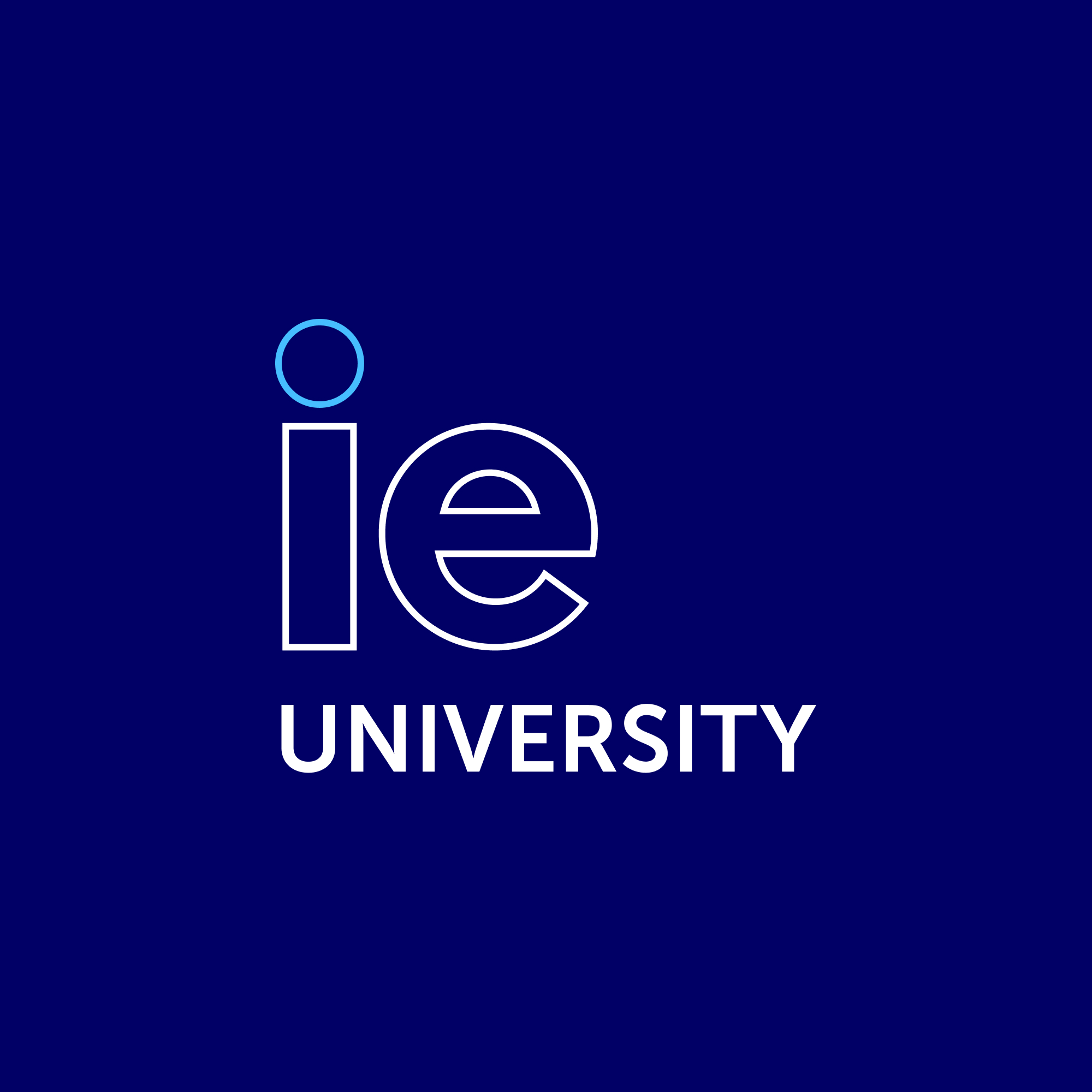The FinTech industry can feel like a blur of buzzwords, bold promises, and billion-dollar valuations. But beneath the noise, a clear transformation is taking place: how value moves, how trust is built, and how people interact with money is being rewritten in real time. If you’re curious, cautious, or quietly ambitious about finance technology, you’re not alone – and you’re in the right place.
This article is your grounded introduction to FinTech. Not hype. Not headlines. A clear, intelligent walkthrough of FinTech meaning, how the FinTech sector operates, the types of FinTech services shaping markets, and where real opportunity lies. We’ll guide you from fundamentals to frontier, with expert insight from IE School of Science & Technology and a practical lens on where this industry is heading.
An introduction to FinTech
The FinTech industry is the fusion of financial services and technology into a new operating system for money. It reimagines how payments move, how credit is assessed, how assets are managed, and how risk is governed. Every tap-to-pay, instant transfer, robo-advisor suggestion, or AI-powered fraud alert is a signal of financial services technology in action.
This is not technology sitting on top of finance. It is financial services and technology reshaping each other. Old structures collide with new possibilities. Regulation tightens even as innovation accelerates. And the result is a FinTech sector that has shifted from experimental to essential. Daily active users of FinTech have increased by 337% since 2020 – a trajectory that reflects deep behavioral change beyond a passing trend.
What exactly is FinTech?
Finding a FinTech meaning starts with clarity. FinTech, short for financial technology, refers to technology-enabled innovation in financial services. It applies tools like mobile apps, cloud computing, AI, APIs and distributed ledgers to transform how financial products are designed, delivered, and experienced.
But FinTech development runs deeper than tools. It represents a two-way evolution: finance adopts technology while technology reshapes finance. This means business models, regulatory frameworks, and consumer expectations evolve together. What once required a physical branch, a paper trail and days of processing now happens in seconds, from a device in your hand.
As Professor Guillermo de Haro Rodríguez, Vice Dean of IE School of Science & Technology, puts it: “FinTech is about solving the ancient problem of trust. The financial system exists to answer one basic question: Can I trust this transaction? What’s changed is how we support that exchange with technology.”
What is the FinTech industry and why does it matter?
The FinTech industry overview reveals a dynamic ecosystem where FinTech companies challenge legacy institutions, unlock access for underserved markets and force new standards for speed and transparency. Payments that once took days now clear in seconds. Credit assessment is driven by alternative data. Wealth tools are no longer reserved for elite investors.
For ambitious professionals and future leaders, this matters because FinTech development has become a strategic battleground. The FinTech sector defines how economies scale, how inclusion expands, and how resilience is engineered into global systems. This is where finance technology becomes infrastructure – not a feature.
What are key themes shaping the FinTech sector today?
Across the FinTech industry, several forces consistently surface:
Access & inclusion
Digital delivery opens financial systems to underserved communities, expanding opportunity and participation.
Speed & scalability
Cloud infrastructure and API-based architectures enable rapid global deployment.
New competition and partnerships
FinTech companies collaborate with or disrupt traditional financial institutions.
Regulation & risk
As financial services and technology converge, governance, compliance and ethical frameworks intensify.
How many types of FinTech are there?
Classifying FinTech development helps clarify strategy, regulation pathways and growth potential. A PayTech roadmap differs entirely from a WealthTech or RegTech strategy. Understanding where you operate defines how you scale.
There is no single definitive list, but the FinTech industry is broadly mapped across seven major categories. These represent the core engines of modern FinTech services:
PayTech
Digital payments, wallets, mobile transfers
LendTech
Digital lending, peer-to-peer models, advanced credit underwriting
WealthTech
Robo-advisors, digital brokerage, investment automation
InsurTech
Technology-driven insurance platforms and claims systems
RegTech / RiskTech
Compliance automation, fraud detection, KYC and AML systems
Digital banking & Banking-as-a-Service
Neo-banks and embedded financial platforms
Blockchain & Digital Assets
Tokenization, decentralized finance, crypto infrastructure
What are the 7 major types of financial institutions?
To navigate the FinTech industry, you must understand the institutions it reshapes. Each of these areas represents a different regulatory, operational and strategic landscape. FinTech services often partner with, challenge, or bypass these institutions entirely.
1. Central banks
2. Retail and commercial banks
3. Credit unions and savings institutions
4. Investment banks
5. Brokerage firms and asset managers
6. Insurance companies
7. Payment institutions and FinTech-licensed entities
What is an example of a FinTech?
Klarna Group plc offers a clear financial technology example. As a Swedish FinTech company pioneering “buy now, pay later” services, Klarna bridges payments, lending and embedded finance. It demonstrates how FinTech companies operate at the intersection of ecommerce and credit while transforming consumer experience.
Other notable FinTech companies include:
1. Stripe: Global payments infrastructure and APIs
2. Paystack: African FinTech powering merchant payments
3. Coinbase: Digital asset exchange and custody platform
Is FinTech a good career?
A career in FinTech combines innovation, global relevance and purpose. Roles span product design, cybersecurity, data science, blockchain engineering and compliance strategy. The interdisciplinary nature of the FinTech sector means professionals become translators between technology and business.
As Guillermo explains: “A good FinTech professional is a translator – between tech and business, risk and reward, innovation and regulation.” This adaptability defines success in a fast-evolving financial services technology landscape.
If you want to move from observer to architect of the FinTech industry, our Master in Financial Technology equips you with the skills to do it. This program integrates finance technology, cutting-edge research and hands-on application, preparing students to lead disruptive projects within the FinTech sector.
Why IE School of Science & Technology for FinTech?
– Taught entirely in English
– Located in Madrid, a major European FinTech hub
– Focus on AI, blockchain, virtual assets and cybersecurity along with other FinTech trends
– Faculty from Ripple, Bank of England, Getnet and IBM
– Access to datathons, venture accelerators and real industry projects
Steps to apply
1. Begin your application → Apply now
Create your online profile and start filling in your details. Upload your résumé, transcripts, and personal statement (written, video, or presentation). Once you’ve completed at least 25% and paid the application fee, your process officially begins. We review applications on a rolling basis, so it’s best to start several months before your preferred intake in September or January.
2. Take your admissions test → Explore test options
Choose the test that best highlights your strengths – ieGAT, GMAT, or GRE. Prepare in advance and reach out to our Admissions team if you’d like advice on which route suits you best.
3. Complete your online assessment → Learn how it works
This is your chance to show us who you are beyond your application. You’ll record short video and written answers designed to showcase your communication, analytical thinking, and personality. A quick practice round will help you feel confident before you start.
4. Attend your personal interview → Find out more
If shortlisted, you’ll meet one-on-one with an Admissions Manager – online or in Madrid – to discuss your goals, experience, and fit for the program. Within about two weeks, you’ll receive your admission decision and can start planning your next chapter.
IE School of Science & Technology values innovation, global perspectives and ethical leadership. For candidates from MENA, this program provides international exposure while maintaining strong regional relevance in emerging financial ecosystems. This is where future FinTech leaders sharpen their edge.
Be a pioneer in the FinTech industry with IE School of Science & Technology
Find out how the new Master in Financial Technology can unlock your new career path.

Benjamin is the editor of Uncover IE. His writing is featured in the LAMDA Verse and Prose Anthology Vol. 19, The Primer and Moonflake Press. Benjamin provided translation for “FalseStuff: La Muerte de las Musas”, winner of Best Theatre Show at the Max Awards 2024.
Benjamin was shortlisted for the Bristol Old Vic Open Sessions 2016 and the Alpine Fellowship Writing Prize 2023.






